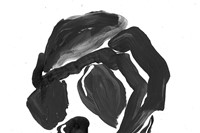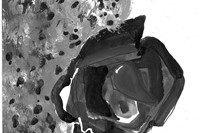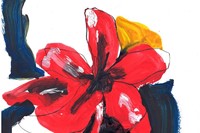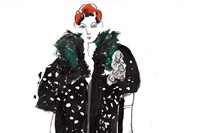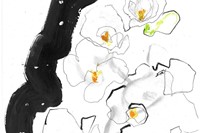In tune with the weather, A/W14 saw flowers blossoming from lapels at Céline, Dries van Noten and Fendi
One of the most interesting trends to emerge from the latest round of shows is a flower worn on the lapel. First seen at Fendi in Milan, the detailing was also seen at Dries van Noten and then, perhaps the most surprising, Céline.
Phoebe Philo is know for her minimalist designs, so to find corsages flourishing on the lapels of her A/W14 collection was a surprise. Made from a single strip of soft leather, gathered and fastened with a pin, its positioning is typical of the traditional flower pin – on the left, just above the wearer's heart.
The lapel flower has a somewhat sombre history, as it is usually reserved for ceremonial occasions (weddings, funerals etc.) so it is refreshing and modern to see it, as in the case of Céline, become a part of the design. Philo's starting point was women such as artist Hannah Hoch and photographer Lee Miller. "These women were doing things which were quite radical at the time [the 1930s], like wearing men's clothing", she explained. "I very much wanted women in men's clothing, but it was a complex idea so we bought it back to quite a feminine silhouette."
"I very much wanted women in men's clothing, but it was a complex idea so we bought it back to quite a feminine silhouette" — Phoebe Philo
One would expect the feminine touch to the designs to also have come from the flowers. But in fact, their origins come from menswear. In the War of the Roses (1455-1487), soldiers wore flowers (red and white) to differentiate between the two sides. When Prince Albert and Queen Victoria first married, photography was still in its infancy. Their wedding photos were taken a year after the marriage, whereupon she presented him with flowers as a token of her love. Prince Albert cut a hole in the lapel of his dress coat and inserted the flower. The boutonnière as it is known (French for buttonhole) was commonly worn by men when they went on dates, at work and of course for formal wear for decades, although it became less common after WWII. Marty Robbins sang about “A White Sports Coat and a Pink Carnation” in 1957, a dress code that remained popular with entertainers such as Dean Martin, The Commodores and Frank Sinatra.
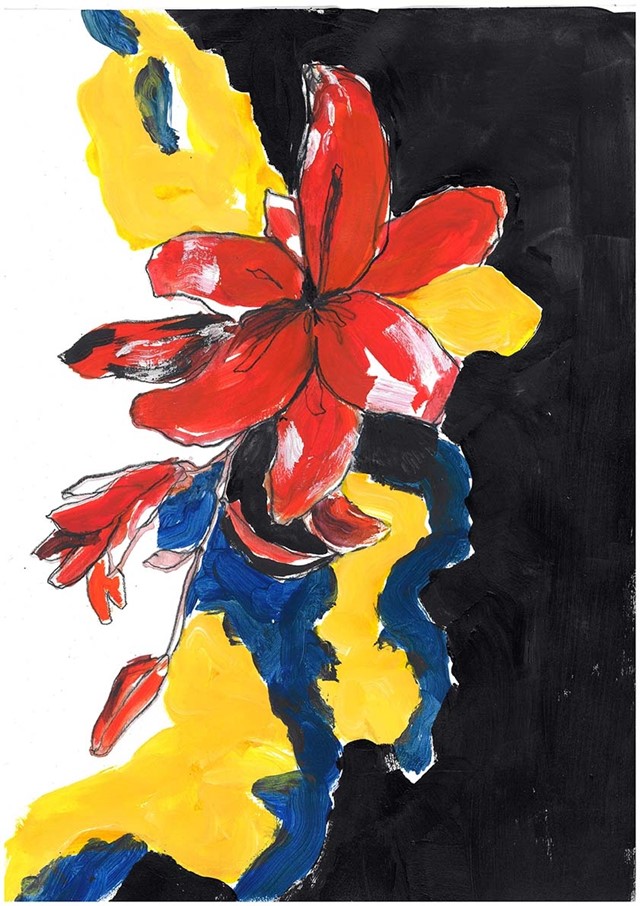
The corsage is the feminine counterpart, and is named after the French word for the bodice of a dress, to which it was attached. They were originally thought to be lucky or ward off evil spirits. In the years since, it has become a customary practice and a demonstration of affection from a date. It is thought that originally the gentleman would bring a gift of flowers for the parents and the girl would select one flower to pin on her dress.
Flowers have always been at important part of the visual language of Dries van Noten, as the current exhibition at the Musée des Arts Décoratifs demonstrates. In the A/W14 show, bright fuchsia lilies were attached to dresses, often with lily prints in contrasting colours. In medieval times, the lily symbolised feminine sexuality and later, purity.
At Fendi, fresh orchids were pinned to fur stoles and threaded through the models hair. Karl Lagerfeld was inspired by Billie Holiday's 1958 song Violets for your Furs: "You bought me violets for my furs / And there was blue in the wintry sky / You pinned the violets to my furs / And gave a lift to the crowds passing by".
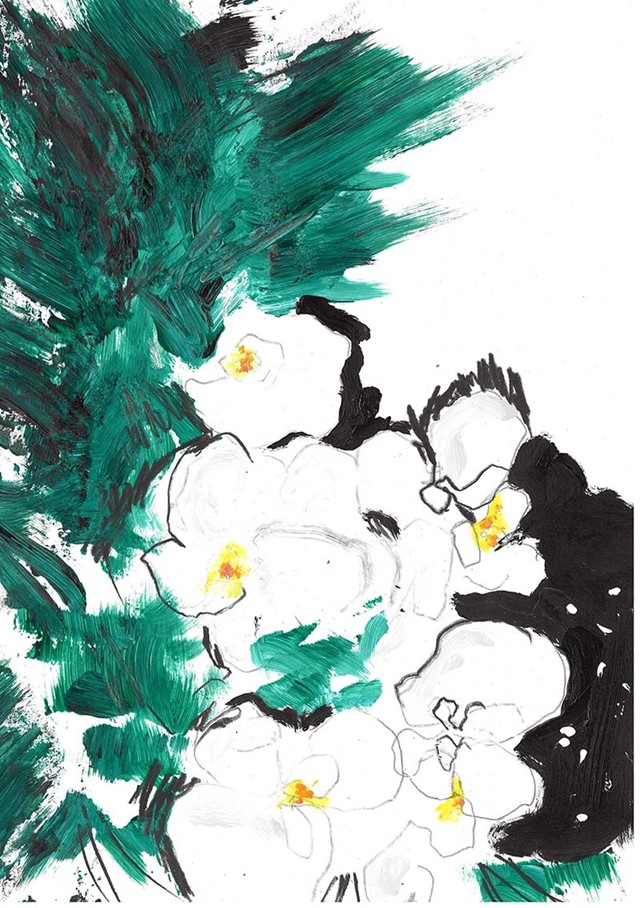
The most highly coveted of ornamental plants, the delicate, exotic and graceful orchid represents love, luxury, beauty and strength. In ancient Greece, orchids were associated with virility. In fact, Greek women believed that if the father of their unborn child ate large, new orchid tubers, the baby would be a boy. If the mother ate small orchid tubers, she would give birth to a girl. During the Victorian era, orchid symbolism shifted to luxury. British politician and statesman Joseph Chamberlain, who cultivated orchids, regularly wore the flower in his buttonhole. Over recent years, perhaps as a result of their mass availability in Ikea, the orchid has become less appealing. Perhaps Lagerfeld can help bring it back?
Text by Laura Bradley

